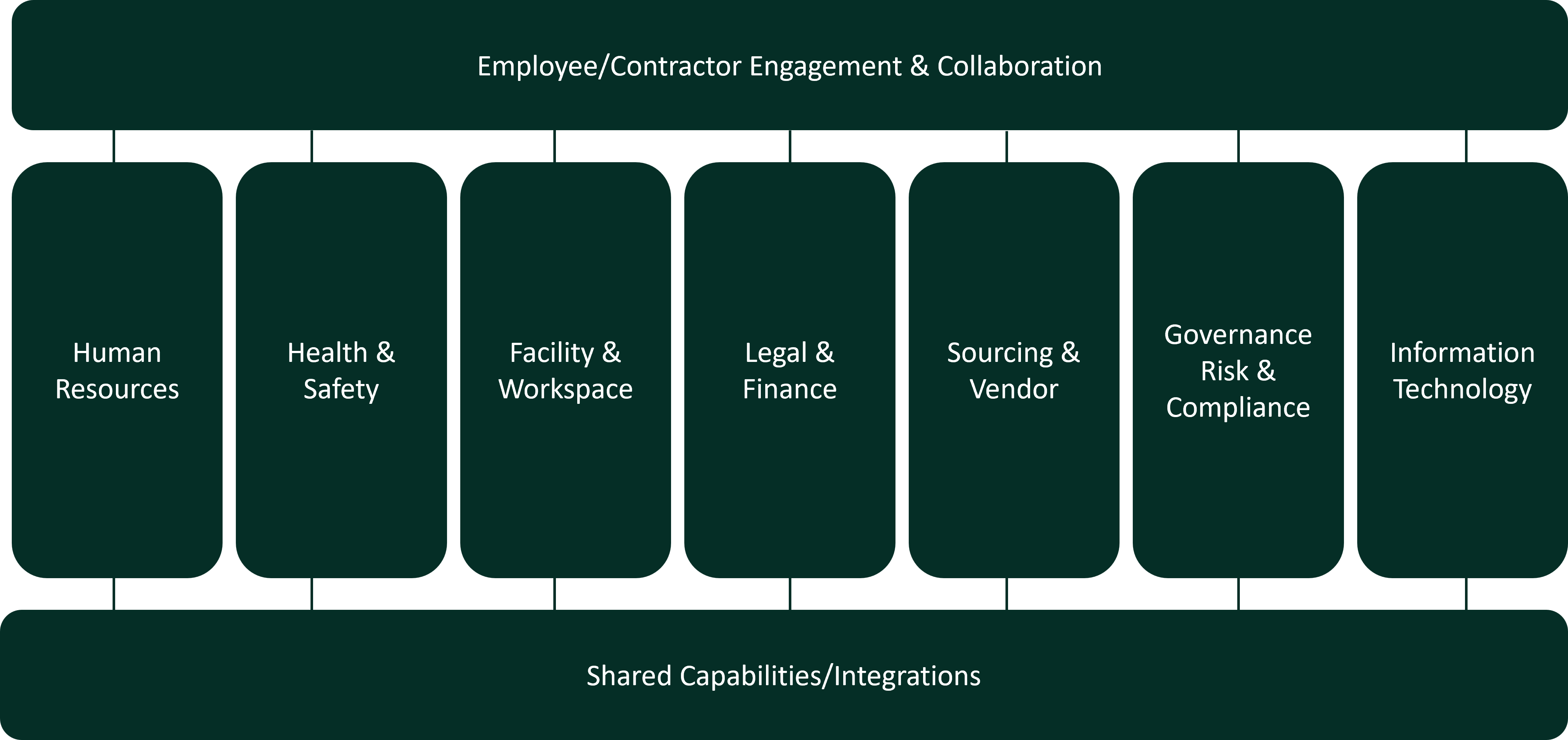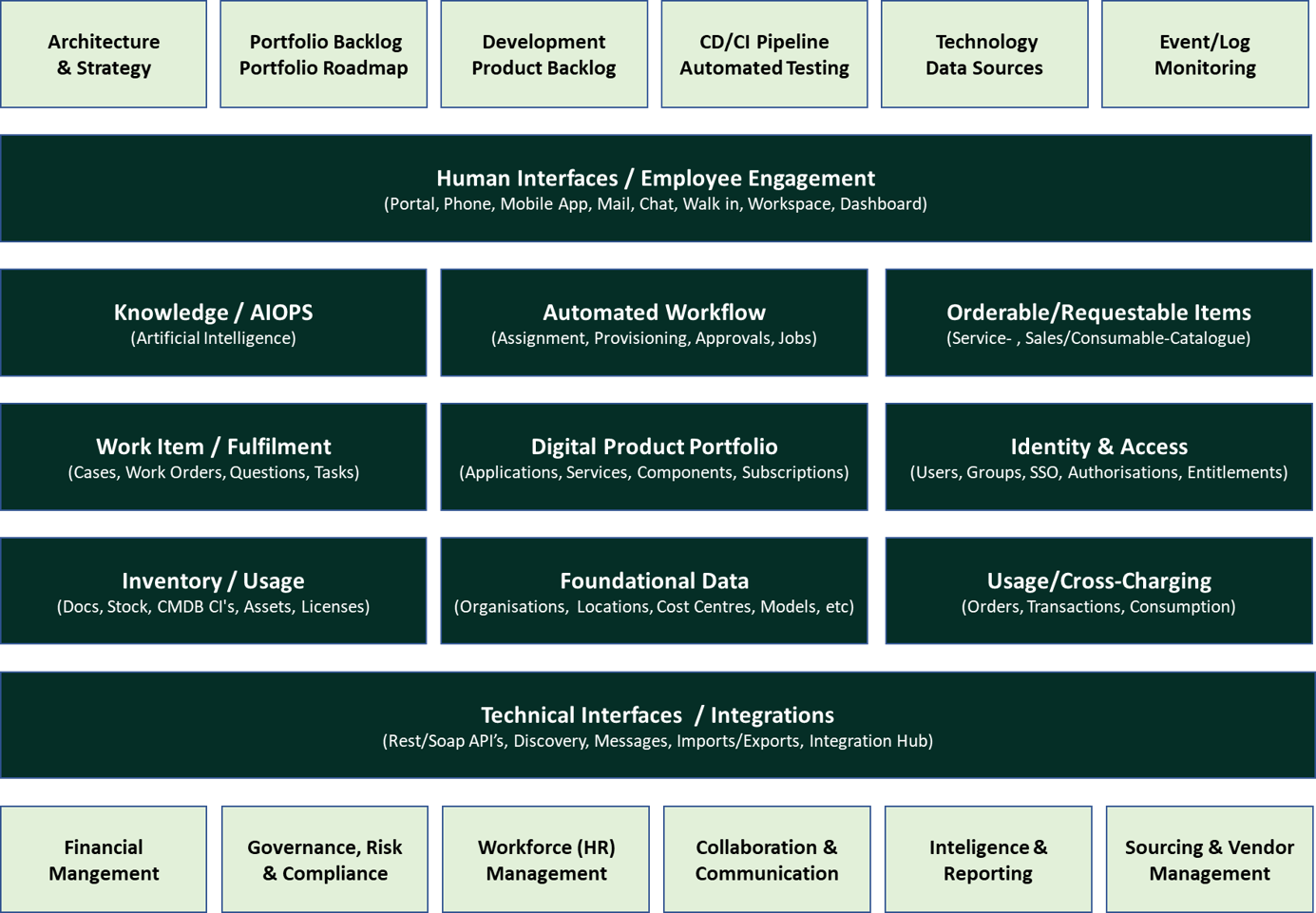Enhancing Collaboration Across Enterprise Functions
Enterprise Service Management (ESM) refers to the structured interaction between employees and key enterprise functions, such as Human Resources, Facilities, Workplace Services, Legal, Finance, Risk, and IT. Beyond facilitating these interactions, ESM fosters collaboration across these functions to ensure seamless service delivery.

For example, when a new employee is onboarded by HR, multiple enterprise functions are involved. HR must create the employee’s file, while Facilities, Workplace Services, and IT may need to provide company assets such as a laptop or workspace. Similarly, if an employee loses their laptop, the incident can have cascading implications across Risk, Finance, Compliance, and IT.
However, enterprise functions often operate using separate platforms, and not all activities are managed within those systems. Additionally, these platforms are frequently siloed, lacking integration, which can hinder collaboration and efficiency. ESM aims to bridge these gaps, ensuring that processes and information flow seamlessly across the organization.
This website describes (choices for) the IT4ESM framework, ESM platforms and its integrations with other Platforms, that facilitate ESM proceses .
IT4ESM is the collection of (dark green) IT Building Blocks that enable the ESM practices. Besides some of the IT4IT practices, platforms such as ServiceNow, BMC Helix and Atlassian (also) enable ESM practices. Most Enterprises use a subset of the platform capabilities. that are commercially available. E.g. some enterprises use aforementioned platforms for IT(4IT), or even only a subset thereof. There are hardly any Enteprises that do not use these platforms to manage (a portion of) IT. IT4ESM basically covers IT4IT plus support for (extention of and integration with) Enterprise Functions.
The picture below is an example on how to segreate the building blocks of the ESM platform, from other Enterprise Platforms, and other IT4IT Platforms.

.